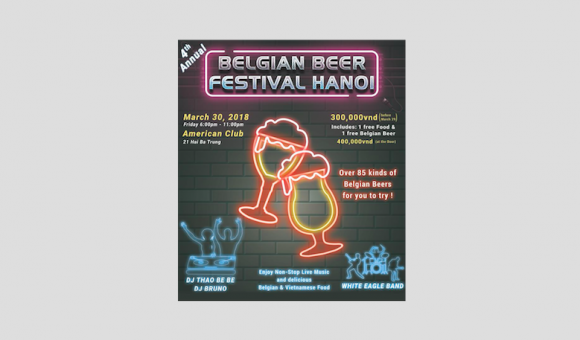Alcoholic Beverages from Europe to Vietnam30/03/2018
Europe plays a central role in the global alcohol market and has one of the largest alcoholic beverage industries in the world. Not only is it a wine and beer producer, but also a producer of spirits.
Europe can be divided according to three alcohol belts: the vodka belt, the beer belt and the wine belt. The first belt covers the East and the North of Europe, part of which are for example Poland and the Baltics. The low temperatures in that region make grape cultivation impossible and as a consequence, the vodka belt and the wine belt are completely separated from each other. The second belt covers the region where beer is consumed since the dawn of time. Denmark, Germany, Croatia belong to that region. The last belt corresponds to the southern parts of Europe, to the former Roman Empire with some exceptions. Italy, France and Spain are surely part of that region. Crucial factors for the division of Europe in three alcohol belts are for instance the climate, drinking patterns and culture.
But why are we now talking about the European beverage industry? How exactly is it related to Vietnam?
Actually, the Asian country is a real beer lover since it belongs to the top ten countries in beer consumption. The Vietnamese economy is now growing fast and it is a great opportunity for the market of beer and other alcoholic beverages coming from the European Union. Unfortunately, the special consumption tax (SCT) may increase in the future and it would of course have a significant impact on Vietnam’s attractiveness for foreign investment. According to the EuroCham’s 2018 Whitebook, maintaining a stable special consumption tax is thus crucial. Increasing the SCT once more could have a negative impact on businesses with a loss of sales of legal imports, but also on the whole industry and economy. It is important to point out that the SCT already underwent several reforms, including one for alcoholic beverages from 2016-2018. Vietnam has recorded a 5 per cent increase annually in the SCT for alcoholic beverages since 2016. Intellectual property rights are also a major concern for European alcohol producers requesting that the Vietnamese government enforces intellectual property rights laws to establish a real cooperation between Vietnamese authorities and owners of protected products and brands. Finally, the government also wants to raise awareness on the consequences of alcohol consumption on health and so, would compel some alcoholic beverage industries to financially contribute to a health improvement fund; an additional cost for European wine and spirits companies. However, with the EU-Vietnam Free Trade Agreement, Vietnamese tariffs on wine, spirits and beer should be swept away seven and ten years after the EVFTA’s entry into force.
What about Belgian Beers?
Over the last 4 to 5 years, the Vietnamese market for Belgian “special” beers has been growing at an ultrafast path and most of our regions and provinces are represented in one way or another. Chimay, Rochefort, Chouffe et autre Val-Dieu are now available in Vietnam with a fair success.
The Biggest brewer in the world, AB Inbev is also here with couple of investment and more in the pipeline.
On the 30th of March, BeluxCham hosts the 4th edition of the Belgian Beer Festival in Hanoi. Last year, the event attracted more than 1.300 visitors. This year, visitors will get the chance to enjoy more than 85 different Belgian beers, traditional Belgian fries, waffles, and even more. This event is meant to promote a bit of all the richness we have in our beautiful country.
Wrapped-up by Borcy, reviewed by Piérart
Sources:
· Vietnam Investment Review, No. 1380. “EU firms still wary of alcohol market developments.”
· Hanoi Grapevine, hanoigrapevine.com
· Big Think, bigthink.com
